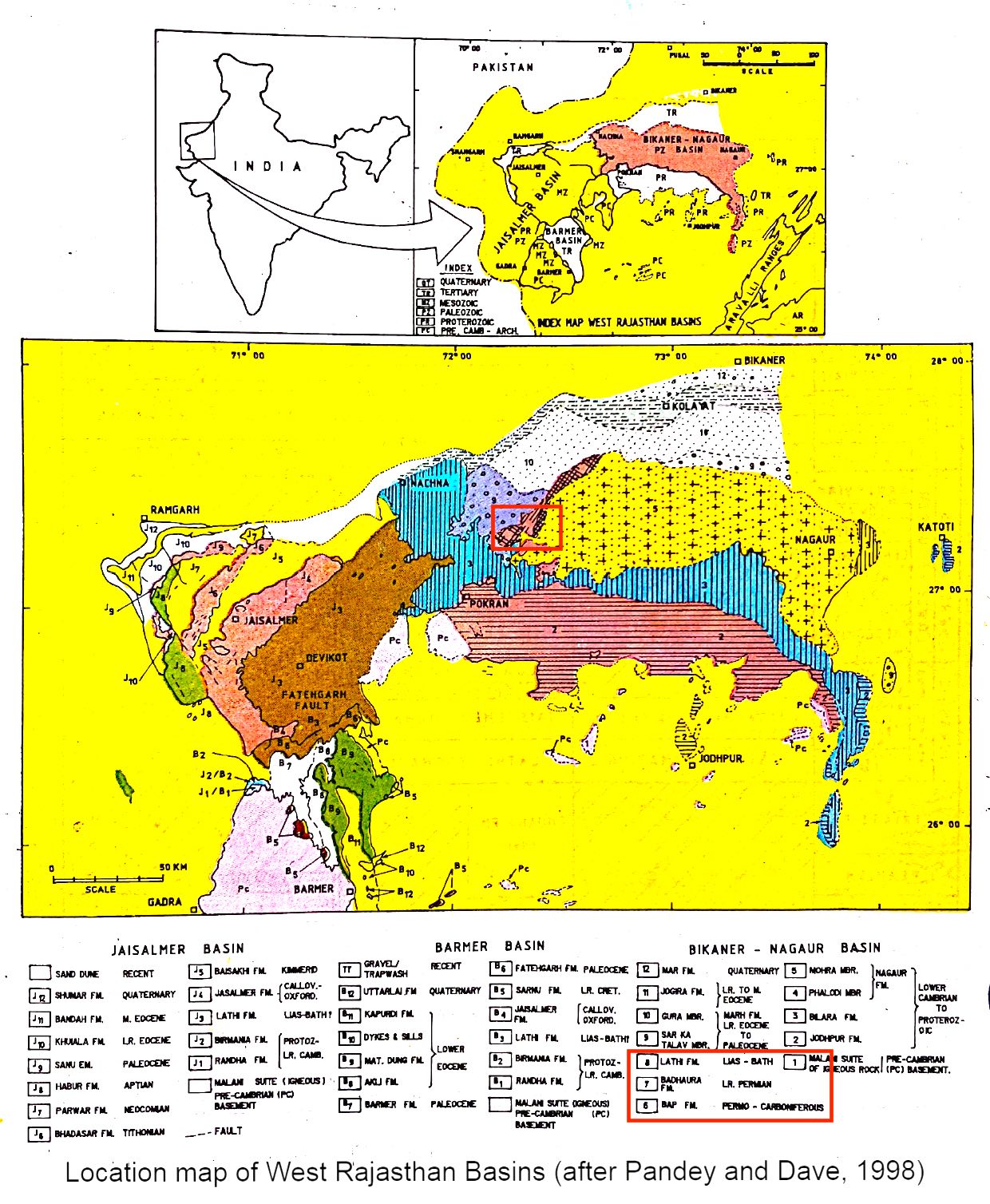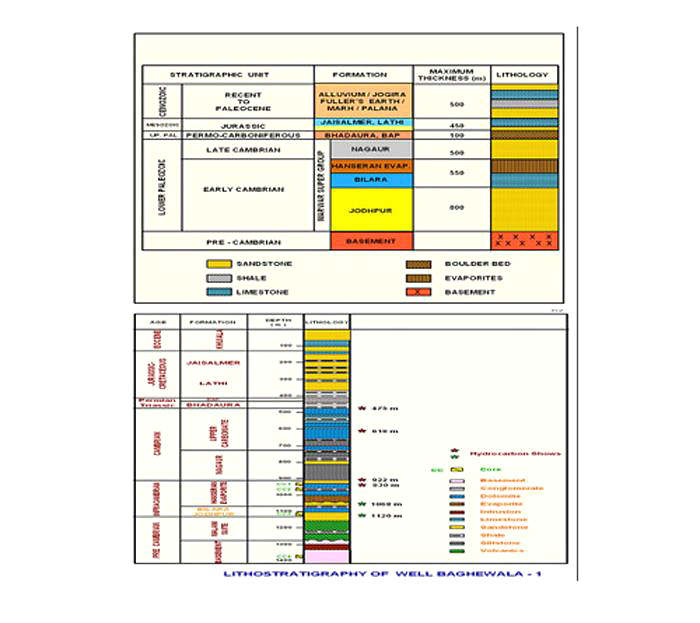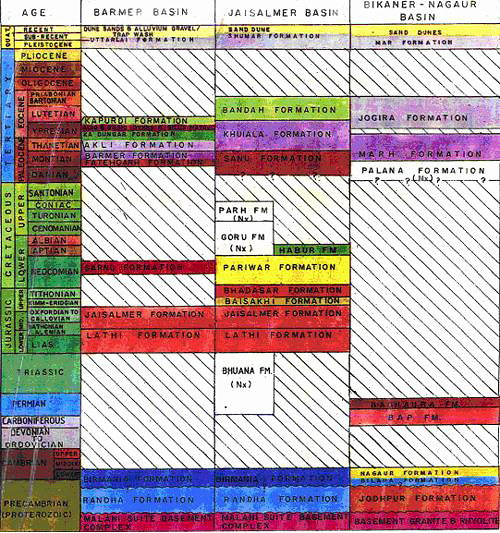Palana Fm
Type Locality and Naming
OUTCROP: The type section is present in quarry section at Palana (interval 460-500m). The name Palana Formation was introduced by Shrivastava and Srinivasan (1962) to include lignites limestone and Fuller’s earth near Palana. Later it was modified by Mishra et al., 1993 to include essentially the lignite beds and clays. [Original Publication: Shrivastava, B.P., and Srinivasan, S., 1962: Geology of the area around Bap Nagaur, Western Rajasthan: Progress Report for the year 1961-62. ONGC Report (Unpublished)]
[Figure 1: Location map of West Rajasthan Basins (after Pandey and Dave, 1998)]
Lithology and Thickness
Limestone, Bentonite, Claystone, Sandstone. In the type area the lithology is characterized by the association of Nummulitic limestone, Fuller’s earth, grey to variegated and carbonaceous shale, medium- to coarse-grained sandstone and lignite bands.
[Figure 2: Generalized and Subsurface Stratigraphy of Bikaner-Nagaur Basin ((from dghindia.gov.in)]
Relationships and Distribution
Lower contact
It is unconformable onto the underlying Badhaura Fm (Permo-Carboniferous).
Upper contact
It has a gradational contact with overlying Marh Fm (Early Eocene).
GeoJSON
Fossils
The formation has a rich yield of palynoflora including Dandotiaspora dialata, Cyathidites australis, Todisporites flavatus, Lygodiumsporites eocenius etc.
Age
Depositional setting
Additional Information


